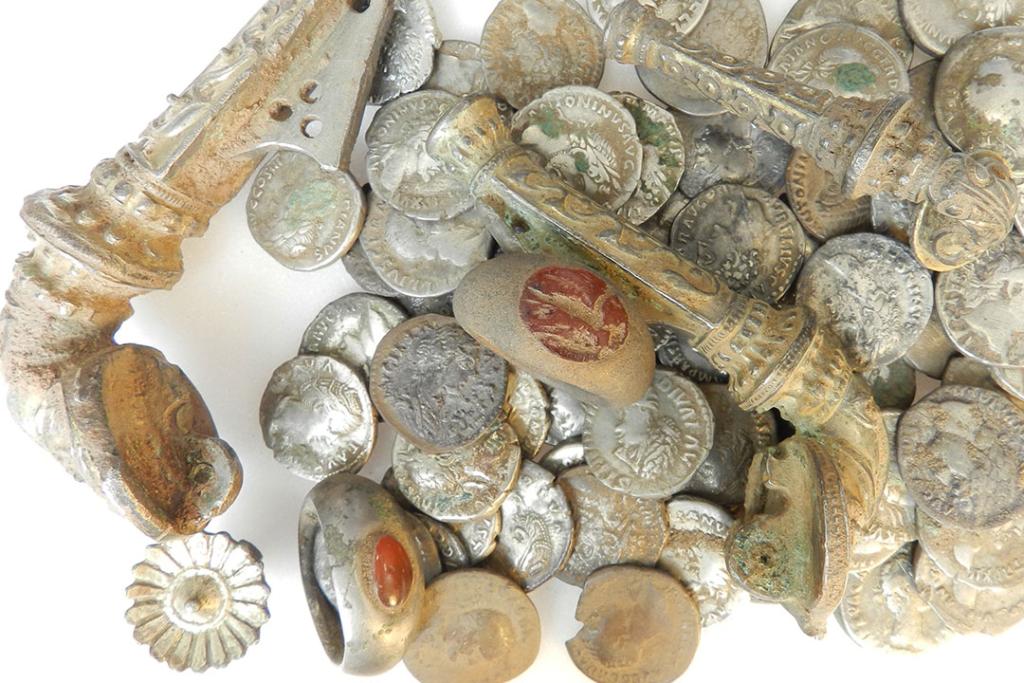
The Knutsford Hoard
The Knutsford Hoard consists of 103 coins, three brooches and two finger rings, discovered in 2012. It is likely that Roman ‘Cheshire Plains’ pottery found associated with these finds was once a container for them, but recent ploughing unwittingly broke the pot and spread the finds across the field.
This is part of the Cheshire Hoards collection.
The Knutsford Hoard was recorded by the Portable Antiquities Scheme.
Coins
The coins in the Knutsford Hoard range in date from 32BC to the end of the 2nd century. 101 are silver denarii, and two are sestertii. It’s possible that the larger sestertii were used as stoppers for the ceramic container in which the valuable denarii were stored.
Brooches
The three brooches of the Knutsford hoard are large examples of 'trumpet' brooches, so named after their open circular ends. These were common in the 2nd century AD, and sometimes associated with the Roman army. They are made from silver and gilded (a surface layer of gold applied). They are decorated with native British-style swirling patterns.
The brooches would have been made in a mould. The incredible detail in the decoration of these items came from the detailed work in making the mould. Some brooches have mould lines visible on them - showing they were made in a two part reusable mould.
These trumpet brooches would have had 'headloops' a metal loop attachment onto the round ‘trumpet’ end, which would probably have been used for attaching a chain when brooches were worn in pairs.
Rings
The two finger rings in the Knutsford hoard are cast silver with carnelian semi-precious stone intaglio (decorative stone setting).
These rings are very small, which might suggest they were for a female hand, but they could have been worn on the fifth finger or on the lower knuckle of a man’s hand. Intaglios could be worn for decoration only or have had a functional purpose in sealing letters and documents. This would have been carried out more commonly by men, but also by women.
Ceramics
More than 40 fragments of pottery were discovered in the vicinity of the coins. It is assumed that these are the broken remains of a pot which has been damaged by ploughing. The pottery is a locally made type of Roman age, known as Wilderspool Oxidised ware. It’s impossible to now know the original shape of the vessel.
Acquisition and conservation
The Malpas and Knutsford Hoards have been acquired in partnership between the Museum of Liverpool and Congleton Museum to be preserved and displayed to the public of the north west. This has been made possible through a generous grant from the Heritage Lottery Fund.
Following their return to the north west the hoards have undergone conservation work, specialist identification and analysis, and have been prepared for display.
